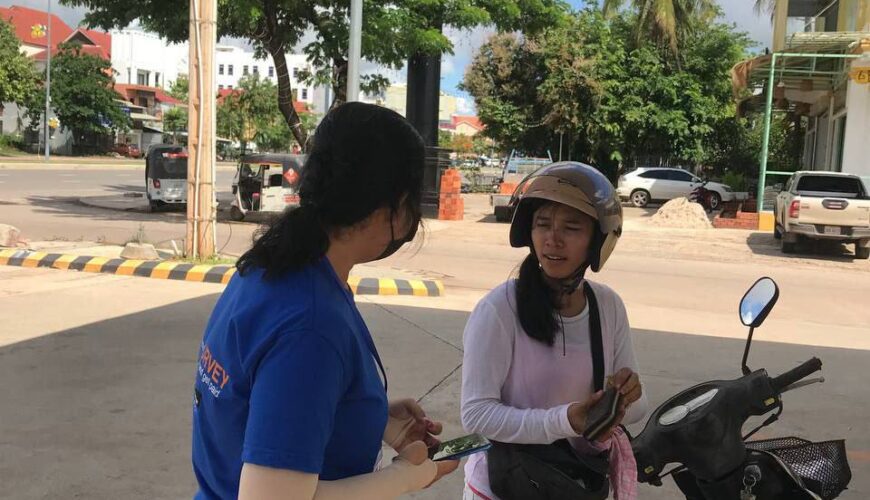Market research is essential for developing and launching new products or services, as well as for improving existing ones.
One of the methods that market researchers use to collect data is street intercept. A street intercept is a face-to-face interview with a randomly selected person who is approached on the street or in a public place. The interviewer asks the person a series of questions related to a topic of interest, such as a product concept, a brand image, or a customer satisfaction issue. The interview usually lasts for a few minutes and is recorded or noted by the interviewer.
But why, when and how should market researchers use street intercepts to collect data? What are the advantages and disadvantages of this method? Here are some points to consider:
Why use street intercepts?
- Street intercepts can provide quick and immediate feedback from customers or potential customers who are in the relevant context or situation. For example, if you want to test a new product idea for a snack, you can interview people who are shopping for snacks in a supermarket or convenience store. This way, you can capture their spontaneous reactions and opinions, as well as observe their behavior and choices.
- Street intercepts can reach a large and diverse sample of respondents who represent the target market or population. You can interview people from different backgrounds, ages, genders, incomes, locations, etc., who may not be easily accessible through other methods, such as online surveys or phone calls. You can also interview people who are not aware of or interested in your product or service, which can help you identify new opportunities or challenges.
- Street intercepts can be relatively low-cost and easy to conduct compared to other methods, such as focus groups or experiments. You do not need to recruit or incentivize respondents in advance, nor do you need to rent or set up a venue or equipment. You only need a trained interviewer, a questionnaire, and a recording device.
When to use street intercepts?
- Street intercepts are best suited for exploratory or descriptive research purposes, where the goal is to understand the market situation, discover customer needs and wants, generate hypotheses or ideas, or evaluate initial reactions or feedback. They are not suitable for conclusive or causal research purposes, where the goal is to test hypotheses or measure effects.
- Street intercepts are most effective when used in combination with other methods, such as surveys or experiments. They can be used before other methods to inform their design or after other methods to explain their results. They should not be used alone or as a substitute for other methods.
- Street intercepts are most appropriate when the topic of interest is simple, factual, straightforward, or objective. They are not appropriate when the topic of interest is complex, sensitive, controversial, or subjective.
How to use street intercepts?
To use street intercepts effectively, you need to follow these steps:
- Define your research objectives and questions. What do you want to learn from the street intercepts? What are the specific questions that you want to ask the respondents?
- Design your questionnaire and script. How will you introduce yourself and your purpose to the respondents? How will you ask the questions in a clear and concise way? How will you ensure that the questions are relevant, unbiased, and easy to answer?
- Select your location and time. Where will you conduct the street intercepts? How will you choose a place that is convenient, safe, and representative of your target market or population? When will you conduct the street intercepts? How will you choose a time that is suitable, appropriate, and optimal for your topic of interest?
- Train your interviewer(s). Who will conduct the street intercepts? How will you train them to approach, interview, and record the respondents? How will you ensure that they follow the questionnaire and script, as well as ethical and professional standards?
- Conduct your street intercepts. How many respondents will you interview? How will you select them randomly and politely? How will you obtain their consent and cooperation? How will you handle any difficulties or objections? How will you thank them and end the interview?
- Analyze and interpret your data. How will you transcribe, code, and organize your data? How will you analyze and interpret your data using appropriate tools and techniques? How will you identify and report the key findings and insights?

